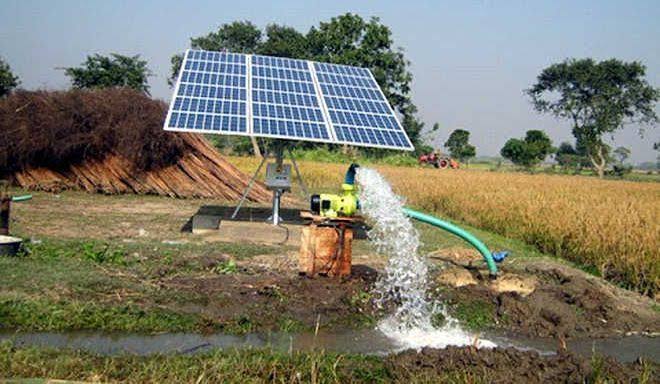
Solar power irrigation refers to the use of solar energy to operate irrigation systems for agriculture. It involves harnessing sunlight through photovoltaic (PV) panels to power pumps, valves, and other irrigation equipment. Solar-powered irrigation systems are particularly beneficial in regions where access to electricity is limited or unreliable, or where water resources need to be efficiently managed.
Key Components:
- Solar Panels: These capture sunlight and convert it into electricity.
- Pump: A solar-powered pump draws water from a source (e.g., a well, river, or reservoir) and distributes it to crops.
- Controller: This regulates the operation of the pump, ensuring that it operates efficiently according to the water requirements.
- Water Distribution System: Pipes, hoses, or sprinklers that deliver water to crops.
- Storage (optional): In some systems, excess energy can be stored in batteries for use during cloudy days or nighttime.
Advantages:
- Sustainability: Solar irrigation uses renewable energy, reducing reliance on fossil fuels.
- Cost-Effective: After the initial investment in solar panels and equipment, operating costs are minimal because sunlight is free.
- Environmentally Friendly: It reduces carbon emissions associated with traditional diesel or electric-powered irrigation systems.
- Off-Grid Capability: Ideal for remote or rural areas without access to grid electricity.
- Scalability: Can be adapted for small farms or large agricultural operations.
Applications:
- Drip Irrigation: Solar energy can power drip irrigation systems, delivering water directly to the plant roots with minimal waste.
- Sprinkler Systems: Solar-powered pumps can operate sprinkler systems to cover larger areas.
- Greenhouse Irrigation: Solar irrigation systems can also be used in controlled environments like greenhouses.
Challenges:
- Initial Cost: The setup can be expensive, though costs are decreasing as solar technology improves.
- Energy Storage: Storing solar energy for use during cloudy days or at night requires additional infrastructure, which adds cost.
- Maintenance: Regular maintenance is required to keep the system running efficiently, including cleaning the solar panels and maintaining the pump.
Overall, solar-powered irrigation is a promising solution for improving agricultural productivity while minimizing environmental impact and ensuring sustainability in water-scarce areas.

Leave a Reply